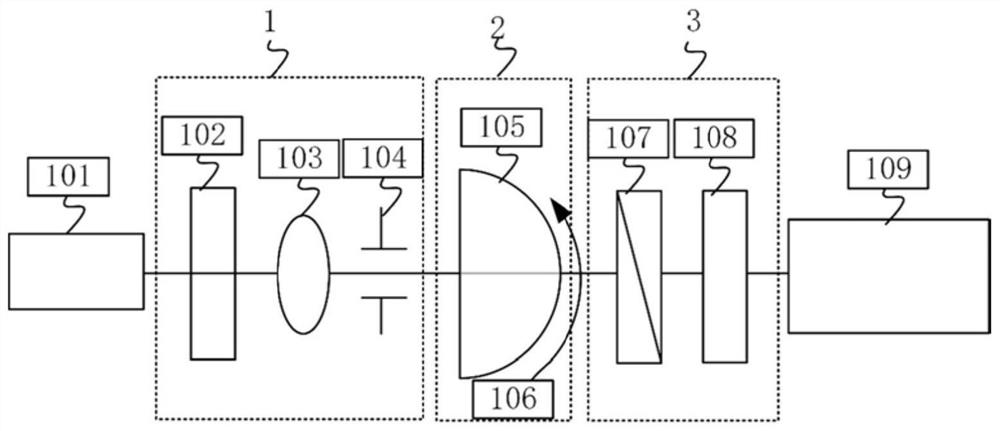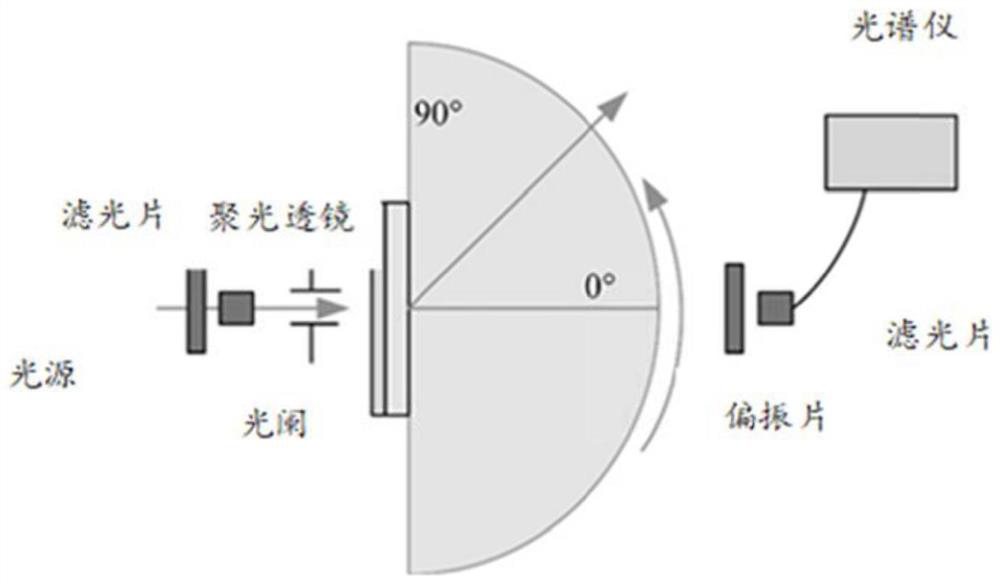Method and device for measuring exciton orientation of luminescent material
A technology of luminescent materials and measurement methods, which is applied in the direction of material excitation analysis, polarization influence characteristics, etc., can solve the problems of inapplicable doping material system and inaccurate results, and achieves simplified optical path system, fast calculation speed, and simple method. Effect
- Summary
- Abstract
- Description
- Claims
- Application Information
AI Technical Summary
Problems solved by technology
Method used
Image
Examples
Embodiment 1
[0091] The present example concerns the exciton orientation of the pure phosphor RD. Sample A is a luminescent film made of material RD by vacuum evaporation, and its substrate is quartz glass; the theoretical thickness of material RD is 50nm, and the shape of sample A is a square with a size of about 20mm×20mm. Specifically include the following steps:
[0092] (1) Coat the luminescent layer material whose base is glass with refractive index matching oil, and fix it on the sample stage of the angle-resolved photoluminescence instrument. Turn on the LED light source (375nm), rotate the turntable 80°, measure the angle-resolved spectral data with a spectrometer through a semi-cylindrical fused silica lens every 1° Use a spectrometer to record spectral data, such as Figure 4 shown.
[0093] (2) At this time, the spectral data obtained at this time is the spectral range of each angle from 0 to 80° and the wavelength from 400nm to 800nm. According to the PL spectrum of the lumi...
Embodiment 2
[0098] This embodiment relates to the molecular orientation of the doped luminescent material RHRD. RHRD is that RD is the luminescent material and RH is the main material. The RD doping ratio is 3% as the luminescent film, the substrate is glass, and it is made by vacuum evaporation. Its area size is about 20mm×20mm. Specifically include the following steps:
[0099] (1) Coat the luminescent layer material whose base is glass with refractive index matching oil, and fix it on the sample stage of the angle-resolved photoluminescence instrument. Turn on the LED light source (375nm), debug and fix it at the 0° position of the rotary table, rotate the rotary table 80°, and use a spectrometer to measure the angle-resolved spectral data through a semi-cylindrical fused silica lens every 1° Use a spectrometer to record spectral data, such as Figure 8 shown.
[0100] (2) At this time, the spectral data obtained at this time is the spectral range of each angle from 0 to 80° and the ...
PUM
 Login to View More
Login to View More Abstract
Description
Claims
Application Information
 Login to View More
Login to View More - R&D
- Intellectual Property
- Life Sciences
- Materials
- Tech Scout
- Unparalleled Data Quality
- Higher Quality Content
- 60% Fewer Hallucinations
Browse by: Latest US Patents, China's latest patents, Technical Efficacy Thesaurus, Application Domain, Technology Topic, Popular Technical Reports.
© 2025 PatSnap. All rights reserved.Legal|Privacy policy|Modern Slavery Act Transparency Statement|Sitemap|About US| Contact US: help@patsnap.com



